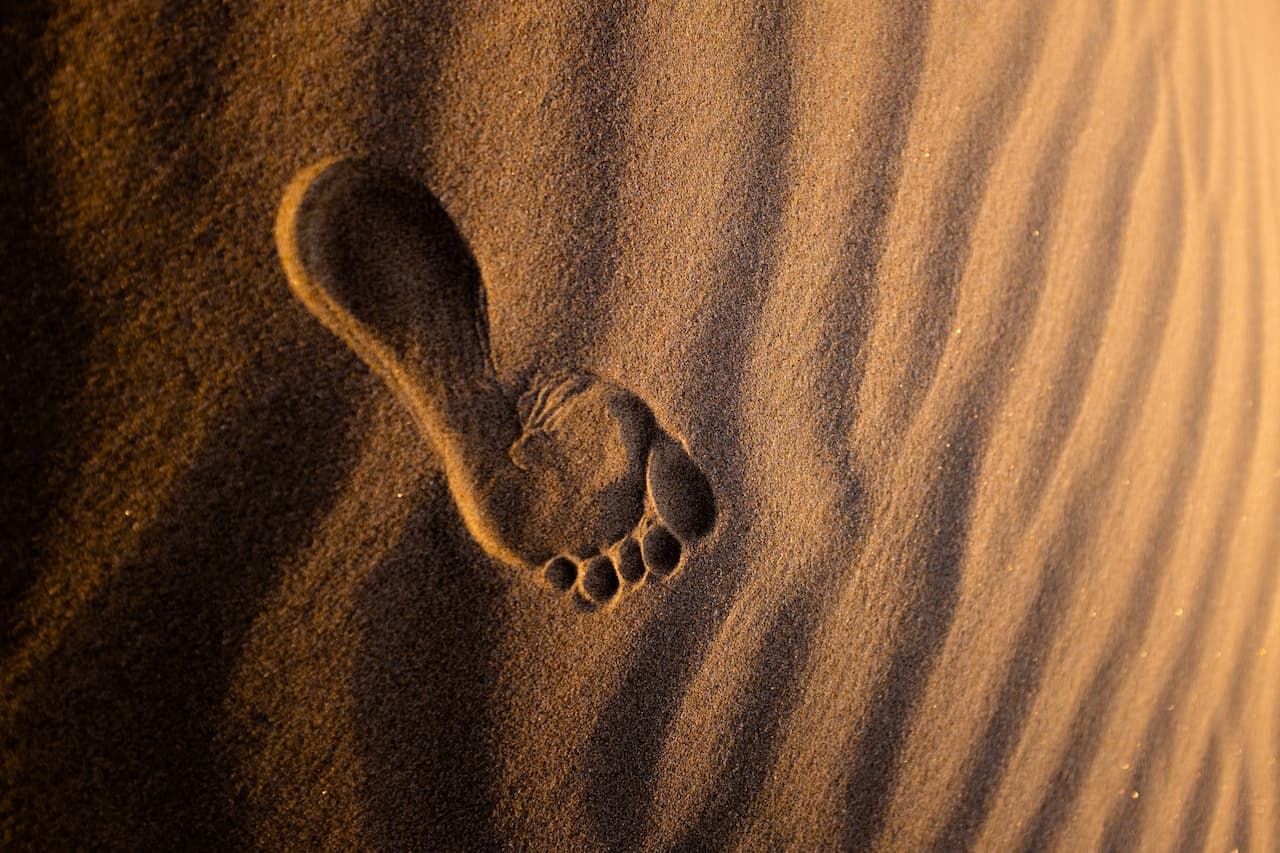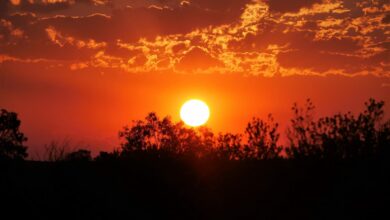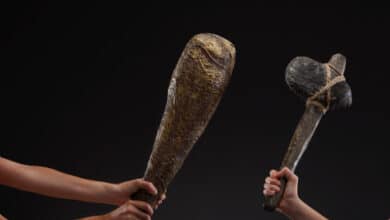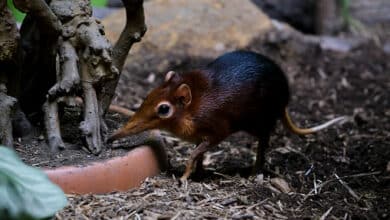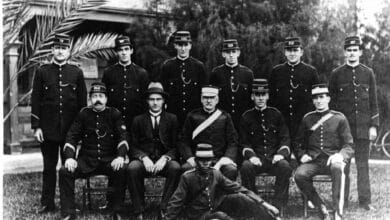Australia’s 20,000 Year Old Human Footprints
About 20,000 years ago, five human hunters sprinted across the soft clay on the edge of a wetland in what is now New South Wales, Australia.
Other people also walked across the muddy terrain, including a five-person family, a child and a man with one leg who hopped around without crutches.
The early Aboriginal ancestors are long gone. Mungo National Park is a place where you can still see traces of their journey, 315 km from Broken Hill.
Some 700 fossil footprints are found in the now dry Willandra Lakes World Heritage Area. 400 of these tracks form a group of 23 tracks.
The tracks were first discovered in 2003 by Mary Pappen Jr., a young Mutthi Mutthi woman. They are the oldest fossil footprints of humans ever found in Australia, and also the largest collection in the entire world.
“Still Here”
Mary Pappen Sr. is a Mutthi Mutthi tribal Elder and Pappen Jr.’s mother. She says that the age of these footprints shows how adaptable and clever Aboriginal ancestors really were.
“We did not die 60,000 years ago. She said that we didn’t die and dry up 26,000 years ago, when the lakes last filled.
“We are people who have walked and cared for our landscape, and are still here.”
Steve Webb, a biological archaeologist at Bond University in Queensland, has studied and partially excavated the tracks with help from other scientists and members of three area Aboriginal tribes. He studied the tracks and excavated them partially with other scientists, and members of three local Aboriginal tribes.
Webb’s work is ongoing. In December, he published an online study of eight of these tracks in the Journal of Human Evolution. Webb claims that the footprints can reveal information that archaeological sites and skeletal remains cannot.
He said, for example, that “these people were extremely active in this region, and we would not have guessed it.”
One-Legged man
Experts have also figured out the mystery behind some of the footprints. For example, they say that one-legged men left tracks. Webb explained that they could only pick up the right foot, and each step had left a deep impression.
He said, “It is a good impression.” It’s the best impression of a foot on the site. There is no left foot to be seen.
Five Pintupi trackers from central Australia helped solve the conundrum.
Webb stated that “they looked at the… track and confirmed it was a one-legged person.”
These people can tell if a woman is walking with a baby on the hip and if she has moved the baby from her right hip to left hip.
They can see subtleties of tracks that we are not able to do.
The Pintupi were able to rely on the fact that they knew of a one-legged person from their own village.
Webb stated, “They knew the capabilities of a man with only one leg.” The trackers think the ancient man may have thrown his support stick and hopped very fast on one leg.
Olympic Sprinter
Webb stated that the trackers gave him “an amazing insight. They showed us little things we had never even noticed.”
A man holding a spear stood in a series of small round holes. A child may have drawn a squiggle on the mud.
Webb’s analysis of his own tracks has led to some interesting conclusions, especially for the prints made by a group that he refers to as the Five Hunters.
Archaeologist analyzed data from human remains dating back 17,000 years, excavated in the area. They also analyzed details of the tracks such as stride length and foot size.
The bones indicate that the people were tall and in good health. They also showed signs of being very athletic.
Webb calculated that one hunter ran at 37 km/h, which is as fast as a sprinter in the Olympics.
Webb stated that “if you weren’t in shape, you wouldn’t have survived.”
Webb and colleagues have so far identified 700 footprints.
He claims that ground-penetrating Radar suggests that thousands of more prints could be hidden beneath the earth in eight layers of old mud, stacked up like carpets.
Now, the tracks are covered with layers of dirt and cloth to protect them from wind, sand and rain erosion.
Scientists and Aboriginal Community members will have to come up with a plan for protecting the ancient tracks.
The plan calls for the construction of community and educational centers near the site, as well as ecotourism.
The ancestors also want to create a sacred shelter or “keeping place” to protect the footprints.
